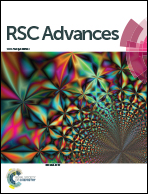SiO2-confined silicon/carbon nanofiber composites as an anode for lithium-ion batteries
Abstract
Because of its ultra-high theoretical capacity (4200 mA h g−1), Si is considered as the most promising anode material candidate for next-generation high-energy lithium-ion batteries. However, the practical use of Si based anodes is constrained by the high volume change (up to 400%) of the Si active material during cycling. Intensive volume change of Si causes severe pulverization, loss of electrical contact between Si particles and the carbon current collector, and unstable SEI formation on the electrode surface. Herein, we introduce nanoscale silica-coated silicon/carbon (Si@C–SiO2) nanofiber composites that can maintain their structural stability during repeated cycling. Results indicated that nanoscale SiO2 coating of Si@C nanofibers helped preserve the Si particles within the nanofiber structure, resulting in stable solid electrolyte interphase formation and improved cycling performance. Electrochemical performance results showed that the Si@C–SiO2 nanofiber composite anodes had good capacity retention of 89.8% and high coulombic efficiency of 97.2% at the 50th cycle. It is, therefore, demonstrated that nanoscale SiO2 coating is an effective method to improve the electrochemical performance of Si@C nanofiber composite anodes.


 Please wait while we load your content...
Please wait while we load your content...